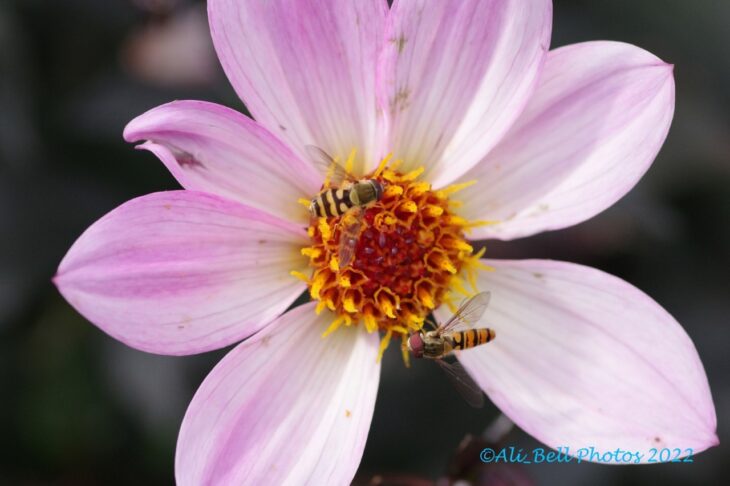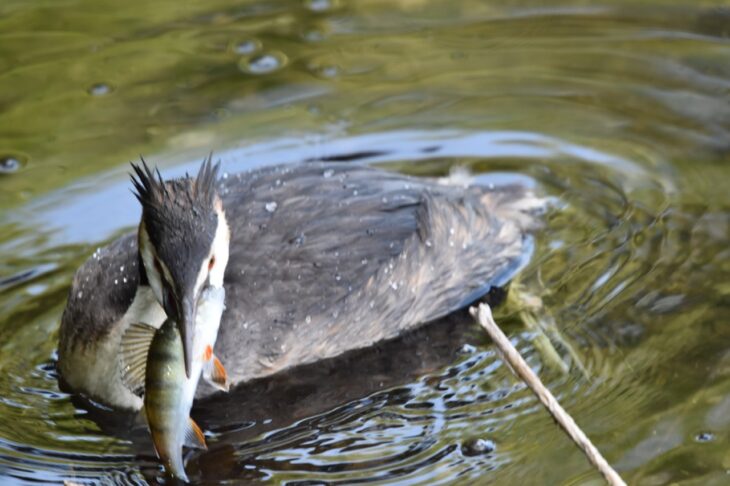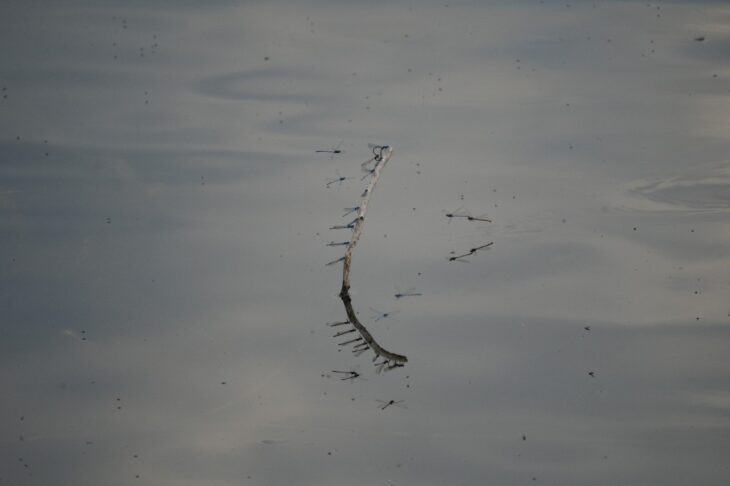Close Encounters
A wildlife reserve is called a wildlife reserve for a very good reason: it’s a space reserved for wildlife.
A safe, undisturbed, healthy habitat brings many benefits to all wild species and can also provide many benefits to human visitors. The Trust’s staff and volunteers running the visitor centre often hear the same comment: ‘it’s so tranquil here, so calming.’ Many of our return visitors are coming for precisely that – a peaceful, natural environment.
For over half a century, between March and August, ospreys have chosen to breed here, and all year round woodland and water birds, red squirrel, otter, beaver (since 2012), pine marten and deer live or spend time on the reserve.
Interestingly, however, it’s frequently the unexpected encounters with smaller, less obvious species which make the biggest impression on our visitors.
In Spring, hearing cuckoos calling – incessantly! Woodpeckers drumming out their territories from left, right and centre, and weeks later their red-capped fledglings chasing each other through the trees or exploring our feeding station. This spring brought fabulous views right beside the seating area of Nuthatch chicks being fed at their nesting box with the accompanying to and fro of parent birds bringing food.

Wren’s nesting in bramble thickets between the Hides and sending up flurries of tiny fledglings as if suddenly tossed upwards from a basket as visitors walk past!
Fallow or roe deer drinking at the lochside, dozing in shady glades, swimming in the loch or cheekily helping themselves to seed from the bird feeders, sometimes accompanied by adorable, ‘bambi-like’ pale, spotted fawns. One fawn was even left by its Mum under the visitor centre decking (pathway between hides), where it slept all day. It was so well camouflaged that few passers-by noticed it but staff and volunteers kept a watch (from a distance) to ensure its safety.
Our Crannog Hide, which stands on stilts over the water’s edge, allows remarkably close views of the loch’s water wildlife. Grey wagtails provided great entertainment when an adult bird repeatedly caught damselflies to feed its bevvy of hungry fledglings. Visitors were charmed by the fluttering young birds, beaks gaping as they lined up along a half submerged branch, trembling with anticipation.
A much remarked upon spectacle is when water birds can be observed diving among shoals of small fish in the clear, shallow water. Swallows nest under the Crannog and their antics swooping over the surface catching insects (at the visitors’ eye level) can be almost close enough to touch; goosanders lining up their young to teach them how to fish, great crested grebe determinedly struggling to swallow (comparatively) large fish!

A sure fire cause of excitement is when kingfishers zoom between the mouths of the loch’s side streams. On hot days, hundreds (thousands?) of brilliantly coloured, jewel-like damselflies and dragonflies hover and dart over the loch: a marvellous sight, even more so when seen through our telescopes. These are not just fleeting glimpses, these can also be close-up and last long enough to take videos and photos, some showing dozens clinging to or mating on reeds.

We regularly find visitors standing on the driveway, quietly gazing over the meadow to the south, or into the woodland to the north. These areas are havens for wildlife from deer to insects, flowers, grasses, fruits and fungi, to red squirrels. In the recent hot spell, people were fascinated by the chance to closely inspect different types of bees and butterflies moving leisurely between bowing, swaying grasses, along with daytime-flying moths, like the small, jet-black Chimney Sweeper. Join the rangers for Moth Night!
Blending into their surroundings so beautifully that only keen eyes can spot them, we’re told about (and excitedly shown photos of) bank voles, beetles, ducks (incubating eggs or with ducklings) bumble bees laden with pollen, and videos of molehills ‘moving and actively being shoveled from beneath’, a tawny owl popping its head out of an owl box, and ponderous, walking toads. Recently, water voles were spotted on a stream along our Woodland Walk.
From time to time, the wildlife comes into the visitor centre. Amongst others, we’ve had ducks with ducklings, pheasants with chicks, red squirrels, a fast, wary looking chaffinch flying among the rafters, a treecreeper spending the night, and several frogs.
The wildlife reserve is the preserve of wildlife. At Lowes it is us, humans, who are kept to paths between rail fences and not allowed to enter the water and that is a major reason why we are fortunate enough to enjoy so many wonderful, natural encounters.
Cherry
Help protect Scotland’s wildlife
Our work to save Scotland’s wildlife is made possible thanks to the generosity of our members and supporters.
Join today from just £3 a month to help protect the species you love.
Preface
A wildlife reserve is called a wildlife reserve for a very good reason: it’s a space reserved for wildlife. A safe, undisturbed, healthy habitat brings many benefits to all wild …
